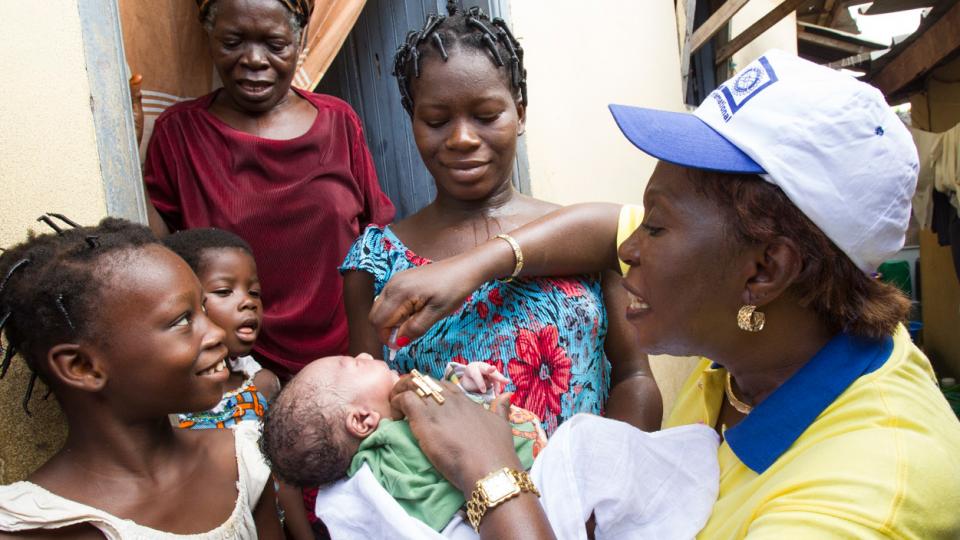National Immunization Week

This year's observance of World Immunization Week, 24-30 April, signals a renewed effort to prevent an estimated 2 to 3 million deaths worldwide from vaccine-preventable diseases, including polio, by closing immunization gaps. The extensive polio-eradication infrastructure created by Rotary, its partners in the Global Polio Eradication Initiative (GPEI), and governments and health ministries provides a model for this effort.
Rotary, the World Health Organization (WHO), UNICEF, and the U.S. Centers for Disease Control & Prevention (CDC) joined together in 1988 to form GPEI with the goal of protecting the world's children by eradicating polio. At that time, the disease paralyzed more than 1,000 people -- most of them young children – worldwide every day. Over the years, Rotary and its partners have reduced the number of polio cases by 99 percent, to fewer than 400 cases in 2014, and there are now only three countries in which polio transmission has never been stopped.
This progress has been won by millions of volunteers and health workers who immunize children in hard-to-reach communities and establish real-time global monitoring and response capacity. The massive infrastructure that's been created, which now encompasses millions of trained health workers as well as best practices and knowledge, can be used to combat other infectious diseases and to undertake other critical health interventions.
"Rotarians have played a key role in bringing the world to the cusp of polio eradication," says Mike McGovern, chair of Rotary's International PolioPlus Committee. "They have contributed more than $1.3 billion to polio eradication, they have petitioned their governments to support the cause, and they have donated countless hours to immunize children throughout the world. These achievements have laid the groundwork for a lasting legacy for the world's children."
Rotary and its partners are looking to carry out a legacy health plan, which has two notable aspects:
Ensuring that the knowledge generated and lessons learned from years of polio eradication activities are shared with other health initiatives.
GPEI, in its efforts to deliver the polio vaccine to the hardest-to-reach and most vulnerable populations in the world, has learned valuable lessons about overcoming barriers. As a result, polio workers have been able to deliver additional health services, including deworming medication, vitamin A supplements, measles mortality-reduction activities, bednets to prevent malaria and other mosquito-borne diseases, and routine immunizations. GPEI's innovative methods include detailed micro-planning and mapping, the tracking of migrant groups, social mobilization programs, and systematic training and deployment of vaccination teams. All of these tactics can be applied to other health initiatives.
Indeed, supporting other health initiatives has been a key component of Rotary's strategy since it launched its PolioPlus program in 1985. Rotary has consistently delivered the "plus" along with polio vaccine, supporting efforts to protect children from other diseases, malnutrition, and other afflictions.

